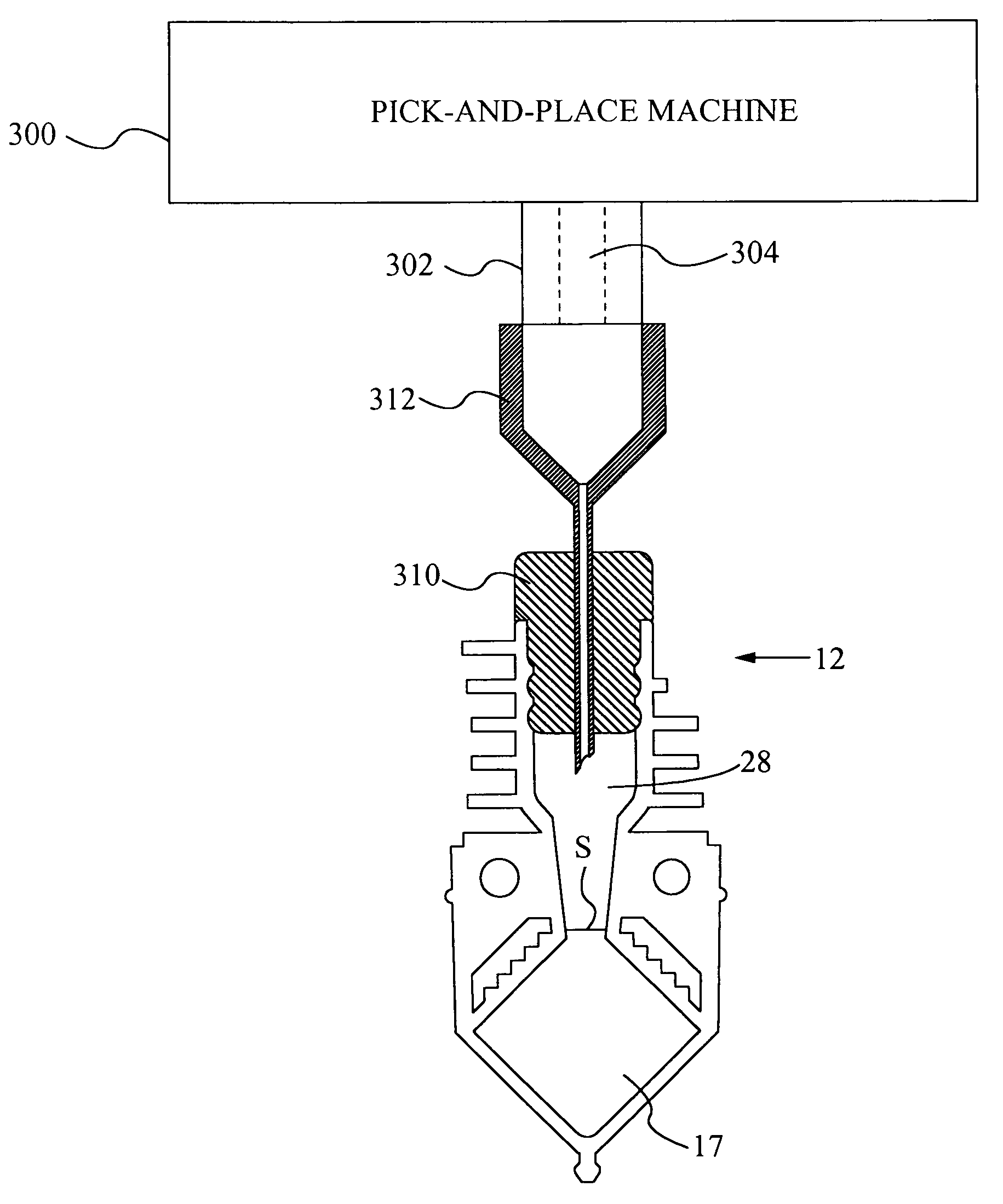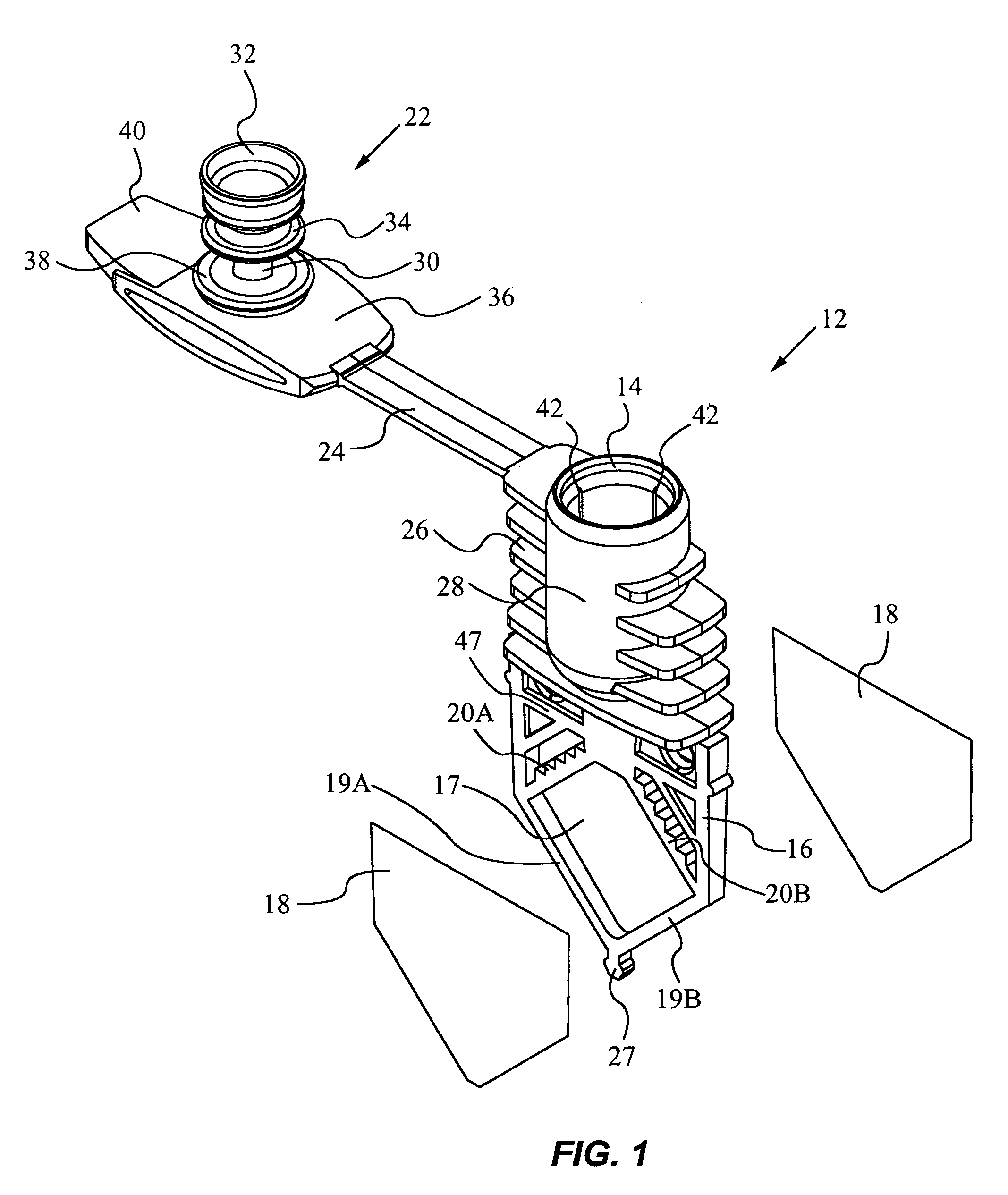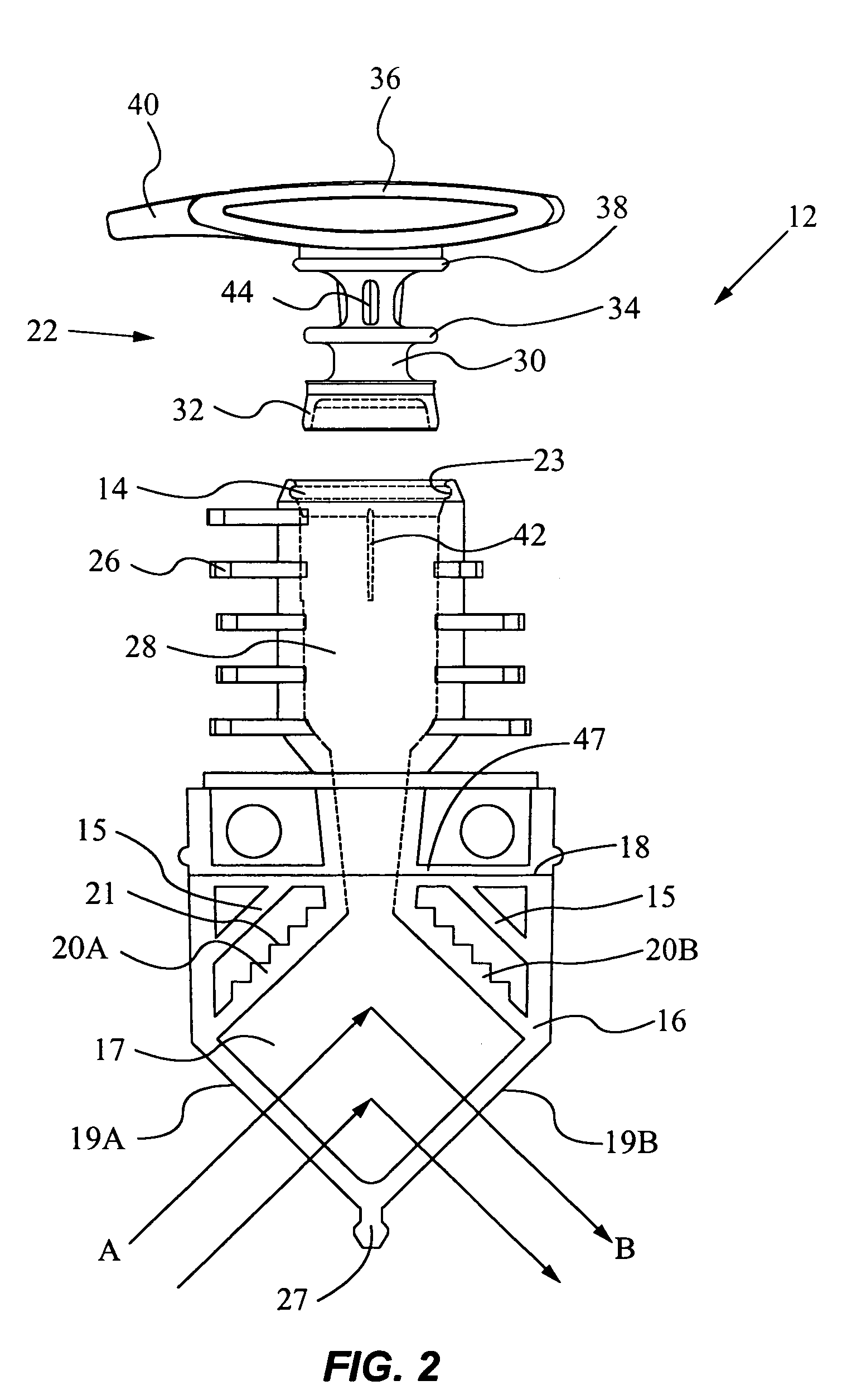Apparatus for performing heat-exchanging chemical reactions
a technology of apparatus and heat exchange, applied in lighting, heating apparatus, laboratory glassware, etc., can solve the problems of long processing time, inefficiency of processes requiring precise temperature control, and affecting the detection of side products, so as to improve detection sensitivity, improve detection efficiency, and facilitate the effect of cooling and heating mixtures
- Summary
- Abstract
- Description
- Claims
- Application Information
AI Technical Summary
Benefits of technology
Problems solved by technology
Method used
Image
Examples
Embodiment Construction
[0061]The present invention provides an apparatus for thermally controlling and optically interrogating a reaction mixture, e.g., a sample mixed with one or more chemicals or reagents. The sample may also be mixed with diluents or buffers. The sample may be an aqueous solution containing particles, cells, microorganisms, ions, or small and large molecules, such as proteins and nucleic acids, etc. In a particular use, the sample may be a bodily fluid (e.g., blood, urine, saliva, sputum, seminal fluid, spinal fluid, mucus, or other bodily fluids). Alternatively, the sample may be a solid made soluble in a liquid or the sample may be an environmental sample such as ground or waste water, soil extracts, pesticide residues, or airborne spores placed in a liquid.
[0062]In a preferred embodiment, the apparatus includes a reaction vessel for holding the mixture and a heat-exchanging module into which the vessel is inserted for thermal processing and optical detection. The heat-exchanging mod...
PUM
| Property | Measurement | Unit |
|---|---|---|
| thickness | aaaaa | aaaaa |
| pressure | aaaaa | aaaaa |
| thickness | aaaaa | aaaaa |
Abstract
Description
Claims
Application Information
 Login to View More
Login to View More - R&D
- Intellectual Property
- Life Sciences
- Materials
- Tech Scout
- Unparalleled Data Quality
- Higher Quality Content
- 60% Fewer Hallucinations
Browse by: Latest US Patents, China's latest patents, Technical Efficacy Thesaurus, Application Domain, Technology Topic, Popular Technical Reports.
© 2025 PatSnap. All rights reserved.Legal|Privacy policy|Modern Slavery Act Transparency Statement|Sitemap|About US| Contact US: help@patsnap.com



